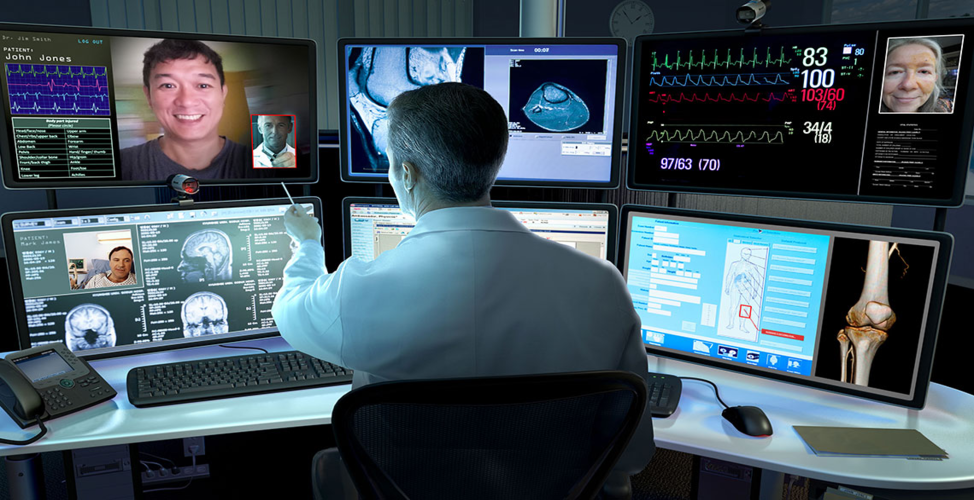Telemedicine technologies have become an essential component of modern healthcare, particularly in response to the global challenges of the COVID-19 pandemic. As healthcare continues to shift toward more accessible, efficient, and patient-centered models, telemedicine plays a pivotal role in transforming how healthcare services are delivered. With advancements in technology and connectivity, telemedicine is not just a convenience; it is now a critical healthcare tool. This article explores the various telemedicine technologies that are reshaping the healthcare landscape, offering insights into their benefits, challenges, and future potential.
What is Telemedicine?
Telemedicine refers to the remote delivery of healthcare services through digital communication technologies. It involves the use of video conferencing, mobile applications, and other digital tools to facilitate patient consultations, diagnostics, treatment, and follow-up care without the need for physical visits to healthcare facilities. Telemedicine can be applied in various specialties, including primary care, mental health, dermatology, cardiology, and more.
Key Benefits of Telemedicine
Telemedicine technologies offer numerous advantages for both healthcare providers and patients:
- Improved Access to Healthcare: Telemedicine breaks down geographical barriers, enabling individuals in rural or underserved areas to access healthcare services without the need for long travel distances.
- Convenience and Time Savings: Patients can consult with healthcare professionals from the comfort of their homes, saving time and reducing the need for in-person visits. This convenience is especially helpful for individuals with chronic conditions, the elderly, and those with mobility challenges.
- Cost Efficiency: Telemedicine can lower healthcare costs by reducing hospital readmissions, emergency room visits, and overhead costs related to physical healthcare facilities. It can also help prevent unnecessary treatments by allowing early diagnosis and intervention.
- Improved Patient Engagement: Telemedicine platforms often include features such as reminders, educational materials, and easy communication tools, which can increase patient engagement and adherence to treatment plans.
Key Telemedicine Technologies That Are Shaping the Future of Healthcare
1. Video Conferencing Solutions
Video conferencing is one of the most widely used telemedicine technologies. It allows real-time communication between healthcare professionals and patients, mimicking the experience of an in-person consultation. Platforms such as Zoom for Healthcare, Doxy.me, and Teladoc have gained popularity for offering secure, HIPAA-compliant video consultations. These platforms provide patients with an opportunity to discuss symptoms, receive diagnoses, and follow up on treatment plans.
2. Remote Patient Monitoring (RPM) Tools
Remote patient monitoring involves the use of wearable devices and sensors that collect and transmit health data to healthcare providers. Devices like smartwatches, blood glucose monitors, blood pressure cuffs, and wearable ECGs are used to track vital signs and chronic conditions such as diabetes, hypertension, and heart disease. This technology allows healthcare professionals to monitor their patients’ health in real-time, enabling early interventions and personalized care.
3. Mobile Health (mHealth) Apps
Mobile health applications are increasingly popular for managing chronic conditions, providing mental health support, and promoting wellness. These apps connect patients with healthcare providers, track health data, and provide educational content. Examples include MyChart, HealthTap, and Medisafe. mHealth apps also help patients monitor their medication schedules, track exercise and nutrition, and receive virtual consultations.
4. Artificial Intelligence (AI) in Telemedicine
AI and machine learning are revolutionizing telemedicine by providing advanced diagnostic capabilities, automating administrative tasks, and enhancing decision-making. AI algorithms are used in telemedicine platforms to analyze medical images, such as X-rays, MRIs, and CT scans, and identify potential issues with higher accuracy and speed than traditional methods. Additionally, AI-powered chatbots can assist patients in triaging their symptoms and providing medical advice based on established protocols.
5. Wearable Health Devices
Wearables, such as fitness trackers and smartwatches, have become invaluable tools in telemedicine. Devices like the Apple Watch and Fitbit offer continuous monitoring of heart rate, oxygen levels, and physical activity, which can be shared with healthcare providers in real-time. These devices can also send alerts to patients and healthcare providers if any irregularities are detected, promoting early detection of health issues.
6. Cloud-Based Healthcare Platforms
Cloud-based telemedicine platforms enable secure, remote access to patient data and medical records from any device with an internet connection. Healthcare professionals can use these platforms to review patient histories, make diagnoses, and prescribe treatments. Cloud storage ensures that patient information is easily accessible, and it supports collaboration between specialists, improving the overall quality of care.
Challenges and Considerations in Telemedicine Adoption
While telemedicine offers numerous advantages, its widespread adoption faces several challenges:
1. Privacy and Security Concerns
Telemedicine involves the transmission of sensitive health data, making data security a significant concern. Healthcare providers must comply with strict regulations such as HIPAA (Health Insurance Portability and Accountability Act) to ensure patient confidentiality. Implementing secure video conferencing platforms, encryption protocols, and multi-factor authentication systems is essential to safeguard patient information.
2. Technology Accessibility and Literacy
For telemedicine to be accessible to all patients, especially in rural or low-income communities, there needs to be adequate access to technology and reliable internet connectivity. Additionally, healthcare professionals and patients must be adequately trained to use telemedicine technologies effectively, which may require additional resources and support.
3. Regulatory and Licensing Issues
Telemedicine services must navigate complex legal and regulatory frameworks, particularly in cross-border care. Different states, countries, and regions may have varying regulations regarding telemedicine, including licensing requirements for healthcare providers. Ensuring that telemedicine platforms comply with these regulations is essential to avoid legal issues.
The Future of Telemedicine
The future of telemedicine is promising, with continued technological advancements driving its growth. Key trends to watch in the coming years include:
- 5G Connectivity: As 5G networks expand, telemedicine technologies will benefit from faster, more reliable internet speeds, enabling high-quality video consultations and real-time monitoring without interruptions.
- Integration with Electronic Health Records (EHRs): Telemedicine platforms are increasingly integrating with EHR systems, allowing healthcare providers to access a patient’s complete medical history, which will streamline consultations and treatment decisions.
- Expanded Use of AI: AI will continue to evolve in telemedicine, with more sophisticated diagnostic tools and personalized treatment recommendations based on patient data.
- Telehealth for Mental Health: Virtual mental health consultations are gaining popularity, and as stigma surrounding mental health decreases, telemedicine will play an even more significant role in providing mental health services.
Conclusion
Telemedicine technologies are not just a passing trend—they are revolutionizing healthcare delivery by making services more accessible, efficient, and personalized. While there are challenges to overcome, the benefits of telemedicine for both patients and healthcare providers are undeniable. As technology continues to advance, we can expect telemedicine to become an integral part of healthcare, ensuring that people worldwide can receive timely and effective care no matter where they are.
By embracing these innovations, healthcare systems can improve patient outcomes, reduce costs, and meet the growing demand for accessible care in a digital-first world.










